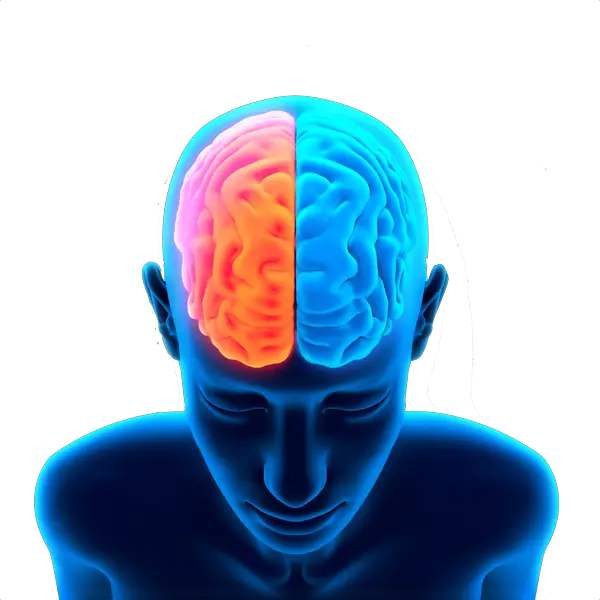History of Autism: Revealing Shocking Mysteries from the Past
Everything changes with time, cultures, societies, and civilizations, and this includes perceptions. I was interested in how people with autism have been treated and viewed throughout history, so I have explored more on the topic.
These are my findings about the history of autism, and I welcome comments on additional information you may have as well. Let’s add to the dialogue!
 Throughout history, people with autism have been treated and viewed in a variety of ways. Typically the perceptions reflected the beliefs and attitudes of the society in which they lived.
Throughout history, people with autism have been treated and viewed in a variety of ways. Typically the perceptions reflected the beliefs and attitudes of the society in which they lived.
Autism was first described in-depth by the Austrian-American psychiatrist Leo Kanner in 1943, but the characteristics associated with the now-determined neurodevelopmental disorder have been observed for centuries.
Autism discovery has a rich history, from ancient times to modern days.
History of Autism From Ancient Times to Modern Era
In ancient times, people with autism were often viewed as having a spiritual or mystical connection.
For example, in some Native American cultures, individuals displaying autism-like qualities were considered to have unique gifts and talents and were often trained to become shamans or spiritual leaders.
Similarly, in ancient Hindu texts, autism history notes that individuals with differences were thought to possess special powers and were even revered as god-like figures.
During the Middle Ages, however, attitudes toward people with autism behaviors began to shift, and not in a good way.
In this period of the history of autism, individuals displaying autistic symptoms were often viewed as being possessed by demons or evil spirits and were subjected to torturous rituals and treatments such as exorcisms, imprisonment, and even execution.
The derogatory term “idiot” originated in the 1300s from the old French word idiote, often used to describe individuals with intellectual disabilities or mental disorders so deficient as to be incapable of ordinary reasoning, including autism. This part of autism history begins to really reflect the mistreatment of individuals associated with autism discovery.
During this time in the history of autism, some believed that being born on Friday the 13th also increased one’s likelihood of having a child with autism.
Interestingly enough, this belief persisted well into modern times; during times as late as the 1980s and 1990s, some parents even tried to schedule their children’s births so they wouldn’t fall on that fateful day, even though it may have just been considered by then as an “unlucky day.”
The Enlightenment period brought a more scientific understanding of neurodiversity as part of the complex history of autism but also continued to perpetuate harmful stereotypes.
In the 18th and 19th centuries, autism discovery of individuals meant that they were subjected to terms such as “imbeciles,” and were often confined to institutions where they were subjected to inhumane conditions, including physical and emotional abuse.
It wasn’t until the 20th century in the history of autism began to be recognized as a distinct medical disorder with its own set of characteristics rather than a supernatural affliction.
RELATED: Shedding Light on Autism and Why It’s An Invisible Disability
Tracing Back the Trail of Autism Throughout History
In the 1940s, autism history gained some understanding when Dr. Kanner, sometimes referred to as the “father of child psychiatry,” published the first formal description of autism.
In the 1960s, researchers began to develop diagnostic criteria for the disorder.
Despite this progress, people with autism continued to face significant stigma and discrimination.
In the 1950s and 60s, parents were often blamed for their child’s autism, with some psychiatrists suggesting that “refrigerator mothers” – cold, unemotional women – were to blame for their child’s condition.
This led to a great deal of guilt and shame among parents of children with autism, and sadly delayed the development of effective treatments and interventions.
It wasn’t until the 1970s that autism advocacy groups began to emerge, fighting for the rights and dignity of people with autism.
In 1975, the Education for All Handicapped Children Act was passed, requiring all schools receiving federal funding to provide appropriate educational opportunities for children with disabilities, including autism.
This was a significant step forward for people with autism, as it provided them with the right to an education that had previously been denied to them.
In the 21st century, attitudes toward people with autism have begun to shift once again.

There is also a growing understanding of the need for early diagnosis and intervention, and a recognition that autism is a neurodevelopmental disorder that is not caused by bad parenting or other external factors.
However, people with autism still face significant challenges, including a lack of access to appropriate educational and vocational opportunities, as well as social isolation and discrimination.
It is up to all of us to continue to work toward a more inclusive and accepting society, where people with autism can thrive and reach their full potential.
Creating this understanding, and acceptance, of differences in everyone is one of the key reasons I created My Autism Mind.
RELATED: Thinking Differently – Why Having Brains on Fire Sparks Innovation
Discovering the Ugly Side of Autism Discovery and Treatments in the Past
There are numerous cases of ostracization against people with autism, throughout the history of autism.
In the 18th century, French physician Jean-Marc Gaspard Itard studied a so-called feral boy known as Victor of Aveyronm, who exhibited many autistic characteristics such as social isolation and lack of language development.
Discrimination was also noted in the case of Oliver Heaviside, a mathematician and electrical engineer who lived in the late 19th and early 20th centuries.
Heaviside was known for his contributions to the development of telegraphy and electromagnetism, but was also talked about for his eccentric behavior and difficulty socializing with others.
Although he was never formally diagnosed with autism, many scholars now believe that Heaviside exhibited characteristics consistent with the disorder. Throughout his life,
Heaviside faced significant challenges due to his social difficulties and unconventional behavior. He was often misunderstood and ostracized by his colleagues, and struggled to find employment and recognition for his work.
Interestingly enough, the first recorded reference to autism was made by a Swiss psychiatrist named Eugen Bleuler in 1911.
He coined the term ‘autism’ to describe the symptoms he observed in some of his patients suffering from schizophrenia.
In addition to societal discrimination, people with neurodiversity throughout the history of autism have also faced challenges within the medical community.
For many years throughout the history of autism, the disorder was misunderstood and misdiagnosed, leading to inappropriate treatments and interventions.
READ MORE: Questioning if Autism is A Genetic Disease – Hot Topics in Research
Autism History And Trying to Force A Cure’
In the early 20th century, for example, psychoanalysis was a popular approach to treating autism, with practitioners attempting to “cure” the disorder by uncovering and addressing underlying psychological issues.
Today, we know that autism is a neurodevelopmental disorder that is not caused by psychological factors or poor parenting.

Despite these advances throughout autism’s history, people on the spectrum still face significant challenges in accessing appropriate treatment and support.
Many individuals with autism struggle to find healthcare providers who are knowledgeable about the disorder, and may experience long wait times for diagnostic assessments and interventions.
There is also a significant shortage of specialized services and resources for individuals with autism, particularly in rural and remote areas.
Another challenge facing people with autism is discrimination in the workplace.
Many employers may be reluctant to hire individuals with autism, believing that they will be unable to perform certain tasks or work effectively with others.
In those environments, individuals with autism rarely make it past the first set of job interviews.
However, studies have shown that individuals with autism can make valuable contributions to the workplace, particularly in fields such as technology and engineering where attention to detail and analytical skills are highly valued.
READ MORE: Work and Autism – What Employers Should Know About Neurodiversity
A Journey into the Evolution of Acceptance Following Autism Discovery
To address these challenges, there is a growing movement toward creating more inclusive and accessible environments for individuals with autism.
This includes efforts to promote awareness and understanding of the disorder, as well as the development of specialized services and resources to support individuals with autism and their families.
For example, some employers are now implementing autism-friendly workplace policies, such as flexible scheduling and sensory accommodations, to support employees with autism better.
There are also a growing number of organizations and support groups dedicated to providing resources and advocacy for individuals with autism and their families.
How people have been treated and viewed throughout autism history is a complex and often painful journey.
From being revered as spiritual leaders in ancient cultures to being persecuted and imprisoned during the Middle Ages, to being misunderstood and stigmatized in the 20th century, individuals with autism have faced a wide range of attitudes and experiences over time.
Despite these challenges, there is reason to be hopeful about the future following autism discovery.
READ MORE: Is An Autism Diagnosis in Adult Age A Life Changer?
I believe there is a growing recognition of the value and potential of individuals with autism and a commitment to creating more inclusive and supportive environments.
By continuing to raise awareness, promote understanding, and build connections while advocating for the rights and dignity of people with autism, we can work toward a more just and equitable society for all.
From a personal view, I do see all the gains being made across our society and applaud those individuals and employers who see beyond behaviors that may not be considered neurotypical.
However, I do still struggle with social interactions, and I hope one day that it becomes just a norm to be accepted for who I am and liked and appreciated for my strengths.
Everyone should have the respect and dignity to be loved for who they are and not be forced to pretend to be someone else through masking and code-switching.
Follow me on social media and read my other blogs on autism to see how we can build a better world together.
Additional Misconceptions That Lead To Autism Stigmas and Stereotypes
Learn more about other stigmas and stereotypes that autistics face:
- Why Labeling People Can Lead to Stereotyping and Discrimination
- Autism Media Stereotypes: We’re Not All Geniuses, Savants, or Lonely
- Beyond Stereotypes: How Rain Man Revolutionized the Perception of Autism
- Absurd Plot About Autism and Evolution and Why It’s Harmful
- Moving Past the Tired Conspiracy Theory of Vaccines and Autism
- Discover the Powerful Bond Between Autism and Pets
- 3 Reasons Why Pathologizing Crushes Autism Acceptance and Inclusion
- The Hidden Hurdles: Challenging Autism Stigmas in Today’s Politics
- Knocking Down the Stigma of Autism Obsession
